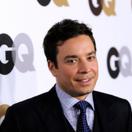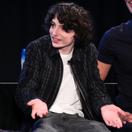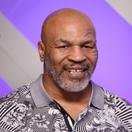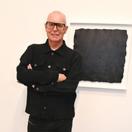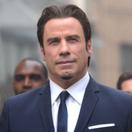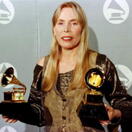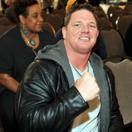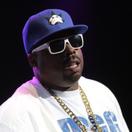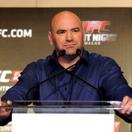Over the last thirty years, Warren Buffett has made a lot of people A LOT of money. Buffett's investment firm Berkshire Hathaway is believed to have turned hundreds of people into millionaires, dozens into centi-millionaires and at least 10 people (that we know of) into full fledged billionaires. One of these Berkshire billionaires was a man named Harold Alfond. When Harold Alfond died in 2007, his 1.6% stake in Berkshire Hathaway was worth $3.5 billion. And while that is certainly an impressive fact on its own, your mind might explode when you find out that Alfond's entire business empire started with a simple $1000 investment in an abandoned shoe factory. His rise from a family of depression-era immigrants to multi-billionaire philanthropist, and part owner of the Boston Red Sox, will amaze and inspire you.
Harold Alfond was born March 6, 1914 in Swampscott, Massachusetts to a family of blue collar Russian-Jewish immigrants. As a teenager growing up at the height of the Great Depression, Harold was forced to work alongside his father at a shoe factory to help the family get by. Harold started out doing very basic odd jobs and eventually worked his way up to factory superintendent.
In 1939, at the age of 25, Harold picked up a hitchhiker while driving to a county fair in Skowhegan, Maine. During their drive, the hitchhiker offhandedly mentioned that an abandoned shoe factory was for sale in the nearby town of Norridgewock. On a whim, Harold dropped the hitchhiker off at his destination, decided to skip the fair altogether and instead drove straight to the abandoned factory. At the time, Harold did not have anywhere near the $1000 asking price to his name. $1000 in 1939 is equal to roughly $17,000 in 2013 inflation adjusted dollars. A year after that first encounter with the hitchhiker, Harold sold his car and officially purchased the factory with his father as a partner. Together they founded the Norrwock Shoe Company. The Norrwock Shoe Company quickly grew into a very successful and profitable company. In 1944, Harold and his father sold the the company to the Shoe Corporation of America for $1.1 million. That's the inflation adjusted equivalent to $13.3 million.
In 1958, Harold spent $10,000 of his own money to purchase an abandoned wool factory in his hometown of Dexter, Maine. His goal was to build something that would help reduce unemployment throughout his beloved home state. He soon founded what would become known as the Dexter Shoe Company.
At first, the Dexter Shoe Company mainly produced private label shoes for big department stores. For example the "Sears brand" of shoes. His earliest customers included major retailers like Sears, JC Penny and Montgomery Ward. Eventually Harold grew tired of being so reliant on a handful of large customers and decided to produce his very own "Dexter" brand of shoes. He hired aggressive sales and marketing teams and pretty soon Dexter shoes were being sold at independent stores around the country. At some point in the 1960s, Harold Alfond came up with a brilliant, three-part innovation that would eventually make him very very very wealthy:
Innovation #1:
Prior to the mid 1960s, if a factory produced a damaged pair of shoes, it would sell the discards to a local re-sellers for roughly one dollar a pair. The re-seller would fix the shoes then sell them for six dollars. A 600% return. Harold thought this was a great margin and therefore his first innovation was to cut out the middleman and sell Dexter damaged shoes right from a store at the back of the factory. This "factory outlet" concept was an instant success but it had one major problem: This model required that Dexter factories produce a high quantity of damaged shoes to satisfy demand. As factories increased quality, their output of damaged goods plummeted, leaving the outlet stores with empty shelves.
Innovation #2:
Believe it or not, Harold's second innovation would change the global retail landscape forever. In order to solve the problem of dwindling damaged goods inventory, Dexter stores also began selling perfectly well made inventory that for whatever reason had gone unsold in the regualar retail stores. Typically this consisted of stale inventory from previous seasons.
Innovation #3:
As Dexter Factory Outlets popped up all over the Eastern United States, other retail outlet stores followed suit and opened their own versions right next door or across the street from Dexter Outlets. At some point in the late 80s, Harold stopped opening stand-alone Dexter Outlet stores and instead began opening entire outlet malls along busy New England highways. He would then lease retail locations to the very same competitors who had been copying him all along. And thus the modern factory outlet mall as we know it, was born. By 1990, the Dexter Shoe Company owned more than 80 factory outlet locations and was leasing retail space to dozens of competitor brands. Around this same time, the company employed close to 4000 people and was generating $250 million in annual revenues.
Warren Buffett Comes Calling
In 1993, Harold Alfond agreed to sell the Dexter Shoe Company to Warren Buffett. The price tag was $443 million. Instead of accepting cash, Harold requested 25,203 shares in Berkshire Hathaway. This amounted to 1.6% of all the outstanding Class A Berkshire shares (the most valuable of the three levels of Berkshire equity).
Requesting stock instead of cash turned out to be an incredibly wise decision for Harold Alfond. At the time of the sale, a single share of Berkshire Class A was selling for right around $16,000. Within five years the price of a single Class A share rose to $70,000. By the time Harold Arnold died in 2007, a single Class A share was worth $140,000 which meant his stake was worth $3.5 billion. Today the shares sell for $170,000 a piece which means his stake is worth $4.25 billion. Alfond never sold a single Berkshire share and his family still controls them today. Along the way he also purchased a stake in the Boston Red Sox, he was one of roughly 10 individual partners in the baseball franchise and two of his sons control that interest today.
It should be noted that Warren Buffett would eventually describe his purchase of the Dexter Shoe Company as the worst investment decision he's ever made in his entire life. Part of the problem was that the acquisition came just before much cheaper shoes manufactured overseas flooded the American market. By 2001, Dexter had been completely obliterated by foreign competition and Berkshire was forced to fold the company altogether. To make matters worse, if Buffett had insisted on using cash instead of stock he would have greatly limited Berkshire's exposure. In 2008 Buffett explained…:
"To date, Dexter is the worst deal that I've made. By using Berkshire stock, I compounded this error hugely. That move made the cost to Berkshire shareholders not $400 million, but rather $3.5 billion. In essence, I gave away 1.6 percent of a wonderful business — one now valued at $220 billion — to buy a worthless business."
Harold Alfond – Philanthropist
Regardless of what eventually happened to Dexter, Harold Alfond spent the better part of the last 15 years of his life becoming an incredibly generous philanthropist. Between 1950 and 2003 alone, the Harold Alfond Foundation gave away more than $100 million to various charitable causes. Today, more than 30 sports facilities, buildings and hospitals bear his name. In 2007 he donated $7 million to establish the Harold Alfond Center for Cancer Care in Augusta, Maine. As if all that wasn't enough, today the Harold Alfond Foundation offers a $500 college scholarship to every single Maine resident baby at the moment of their birth. This money is meant to encourage the child's family to start saving for college early. How cool is that??!!
What's the moral of this story? Work hard? Work smart? Buy low and hold forever? I think the main lesson is that Harold Alfond was a pretty amazing person.






